русский
Observations of GRB afterglows with
Russian-Turkish 1.5-m Telescope (RTT150)
GRB 030329
GCN Circ.: 2001, 2024, 2046, 2051, 2054, 2079, 2094, 2105, 2108, 2119, 2198, 2204, 2220, 2260, 2299
RTT150 was one of the first 1.5m-class telescopes pointed to the
afterglow. Observations were started approximately 6 hours after the
burst. During the first 5 hours of our observations the afterglow faded
exactly as a power law with index -1.19+-0.01 in each of the BVRI Bessel
filters. After that, in all BVRI filters simultaneously we observe a
steepening of the power law light curve. The power law decay index smoothly
approaches the value &approx -1.9, observed by other observatories
later. This power law break occurs at t-t_0 ≈ 0.57 days and lasts for
≈ 0.1 days. We observe no variability above the gradual fading with
the upper limits 10-1% on time scales 0.1-1000s. Spectral flux distribution
in four BVRI filters corresponds to the power law spectrum with spectral
index α = 0.66 +- 0.01. The change of the power law decay index in the
end of our observations can be interpreted as a signature of collimated
ultrarelativistic jet. The afterglow flux distribution in radio, optical and
x-rays is consistent with synchrotron spectrum.
The observations were continued untill approximately 100 days after the
bursts. A significant amount of these data are still unpublished or
published only after preliminary analysys in GCN circulars.
RTT150 first night data table (from Burenin et al., 2003)
Publications:
Burenin et al., Astronomy Letters, 29, 573
(2003), astro-ph/0306137,
The original text in Russian
see also: Urata et al., The Astrophysical Journal,
601, 17, astro-ph/0312145
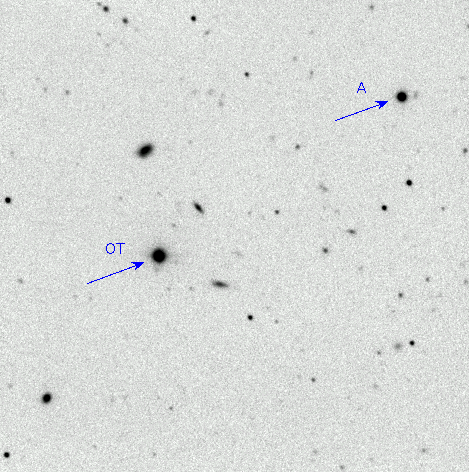
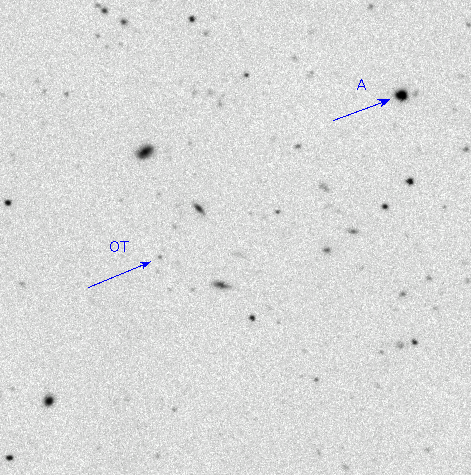
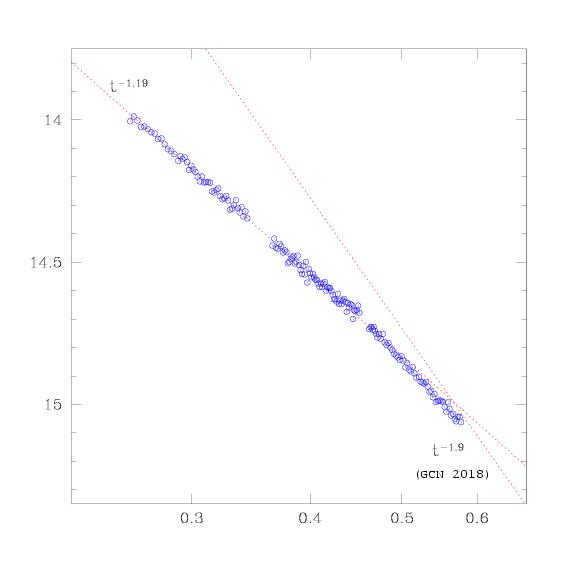
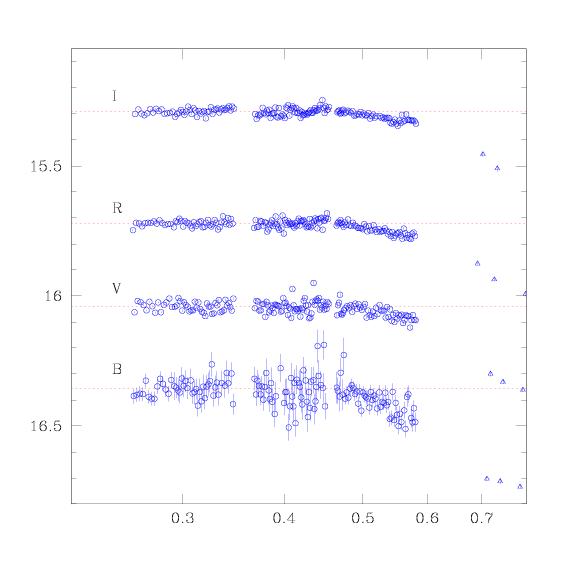
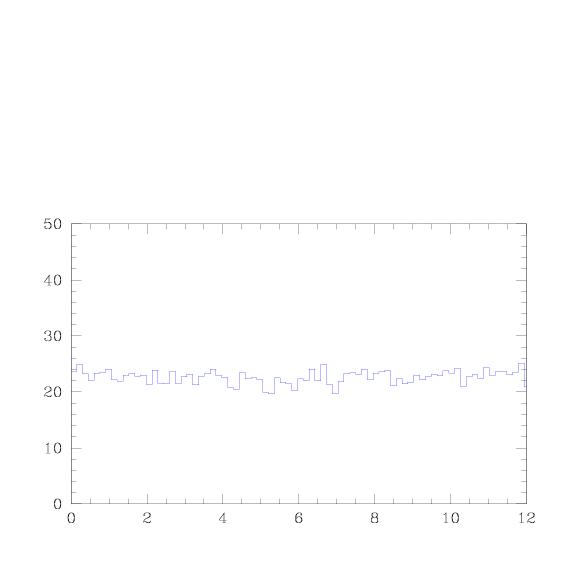

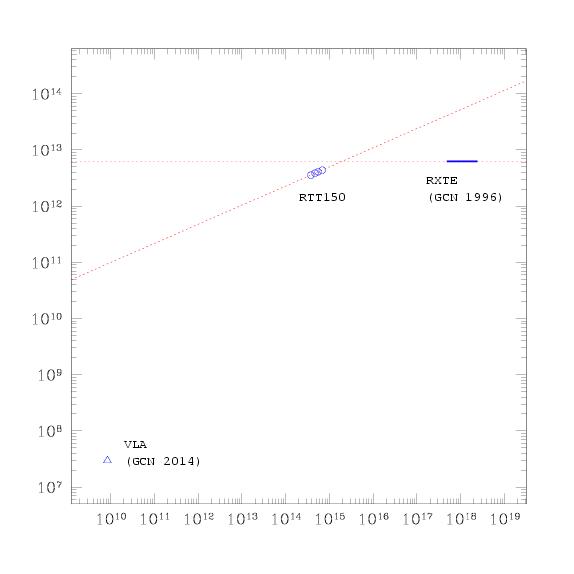

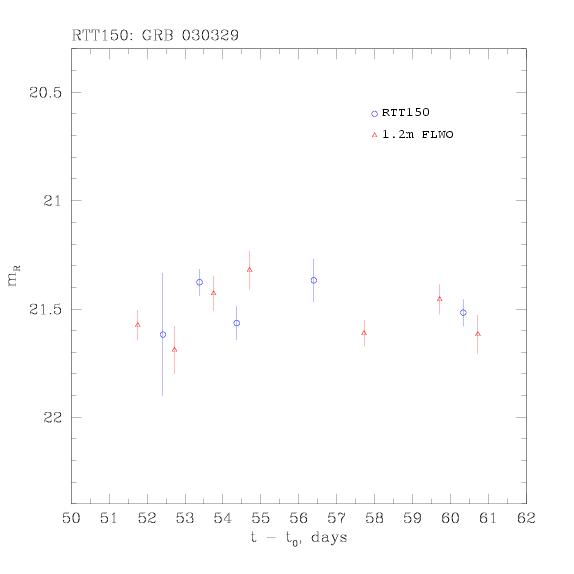
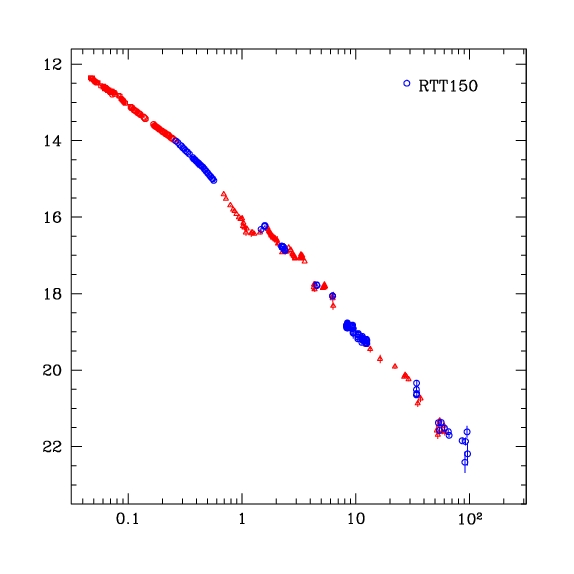
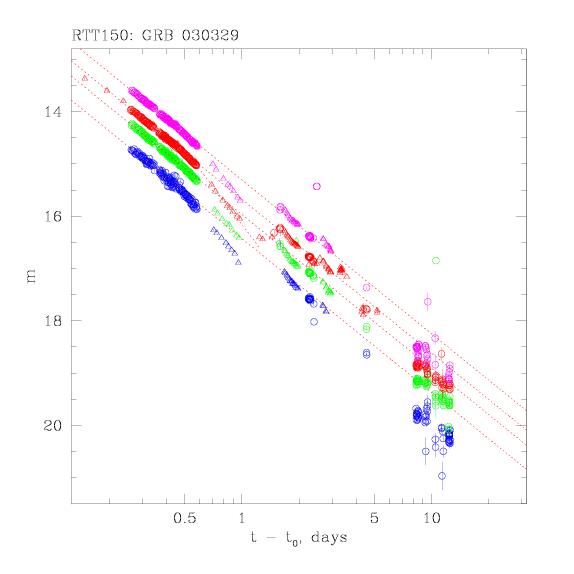
Observations of GRB afterglows with
Russian-Turkish 1.5-m Telescope (RTT150)
High Energy Astrophysics Department
Space Research Institute of Russian Academy of Sciences (IKI)










